Aug 1, 2013 | art history, sculpture
Antonio Corradini lived from 1668 until June 1752, and he worked as a Rococo sculptor in Venice. There’s not a lot known about him, but he’s most famous for his veiled women, and it’s not hard to see why.
Her smooth skin shines right through the thin ripples of the veil resting softly – it spills off noses and ears like tiny waterfalls of marble. But the eyes can always be seen so clearly, closed against the veil pressed against them.
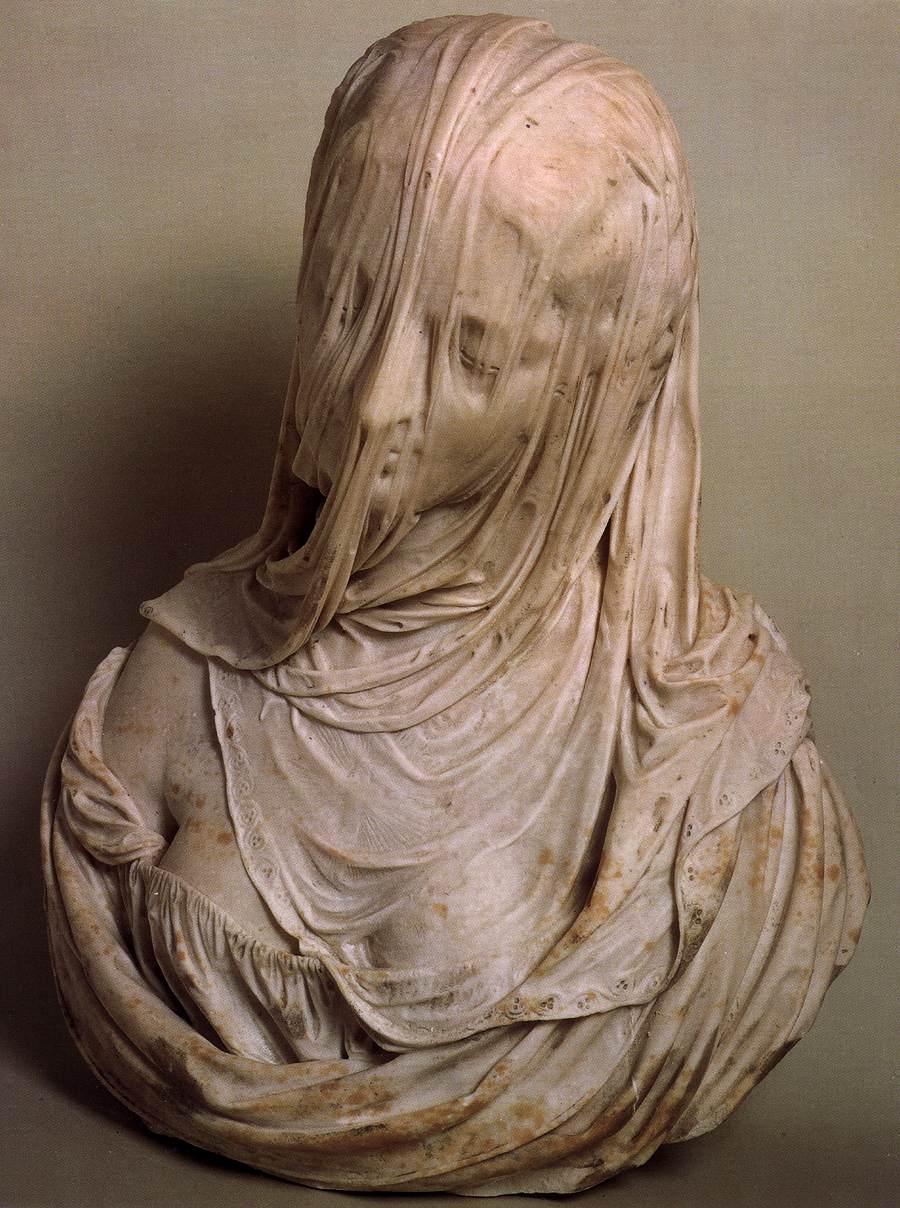
Bust of a Veiled Woman (Puritas), 1717-25
Marble
Museo del Settecento Veneziano, Ca’ Rezzonico, Venice
source.
Corradini played a huge role in solidifying the role of sculptors as ‘artists’ in the early 18th century. In 1723 he is supposed to have been the first person to legally separate the professions of sculptors and stonemasons, creating a school for sculptors and developing it as an official artistic profession.
His “Portrait of Modesty” (below) lives in the Naples museum, Cappella Sansevero, and her posture and accessories make it look like she was made for a church, even though she’s nearly naked through that thin thin veil – standing casually beautiful with eyes closing.
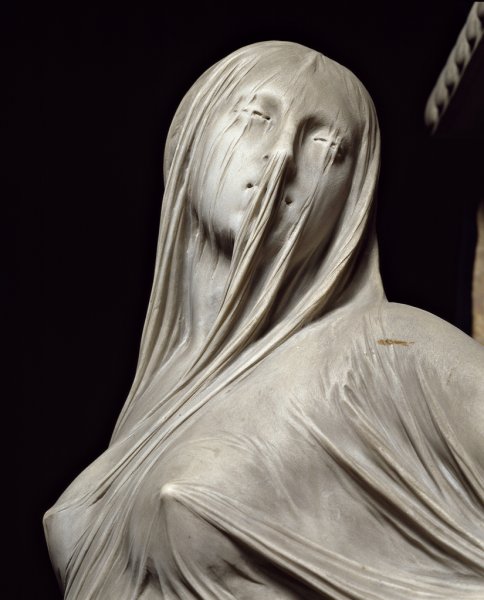

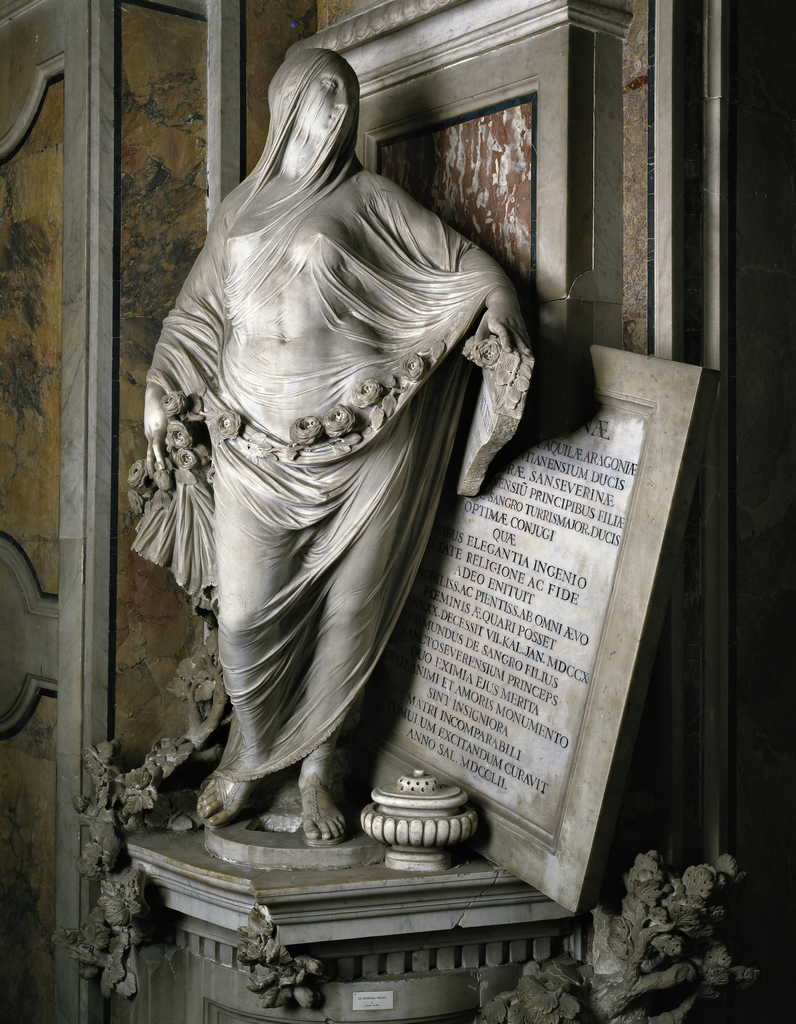
“Modesty,” 1751
Marble, Cappella Sansevero, Napoli
source.
Full disclosure: all info from Corradini’s Wikipedia page.
Jul 24, 2013 | sculpture, typography
Ole Ukena is a German artist who uses simple, modern conceptual works to make a point. He lives and works between Berlin and Bali, and he’s shown his work all over Thailand, India, Germany and France. Although not all his works involve typography, they do have a distinctly clean look that’s only emphasized with big, bold lettering.
His artist statement reads,
“I am not limiting myself to one medium. I simply can’t. It’s a constant adventure, finding new materials in the countries in which I travel, encountering objects or phrases that can be transformed into specific, meaningful pieces. While my work often displays a strong conceptual nature, I am also very drawn to the intuitive.This balancing energy forces me to step out of my mind and just create. These forces are like my left and right hand. My works try to create a map of the human mind, in an attempt to tell a tale about the very nature of it with all its possibilities, limitations, irritations, and hopes.”
“Burnout Syndrome” burned matches, canvas, 2012
Made up of more than 9,000 matches, the matches in the last WORK‘s are struck and the smoke simmers upwards.
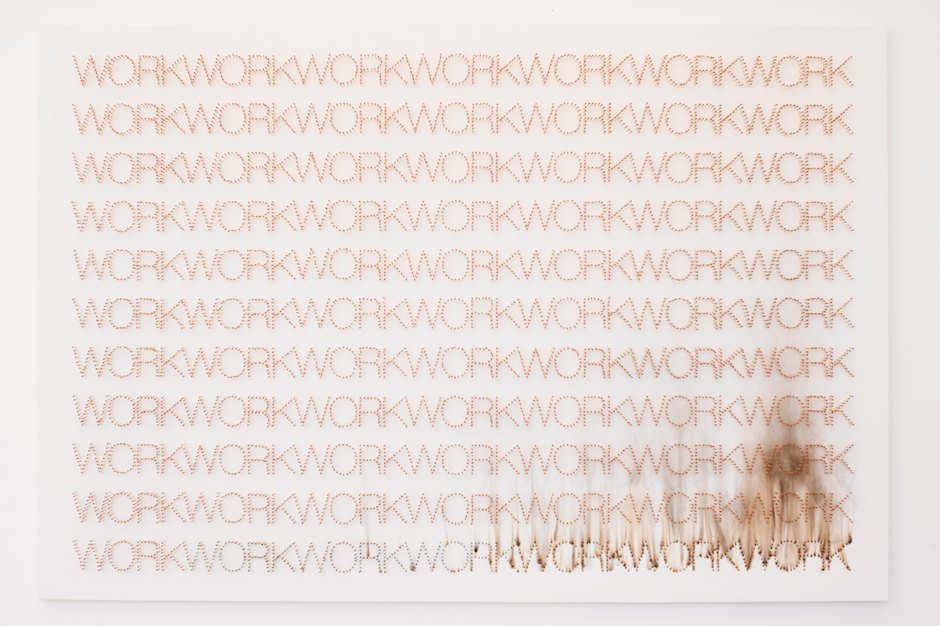
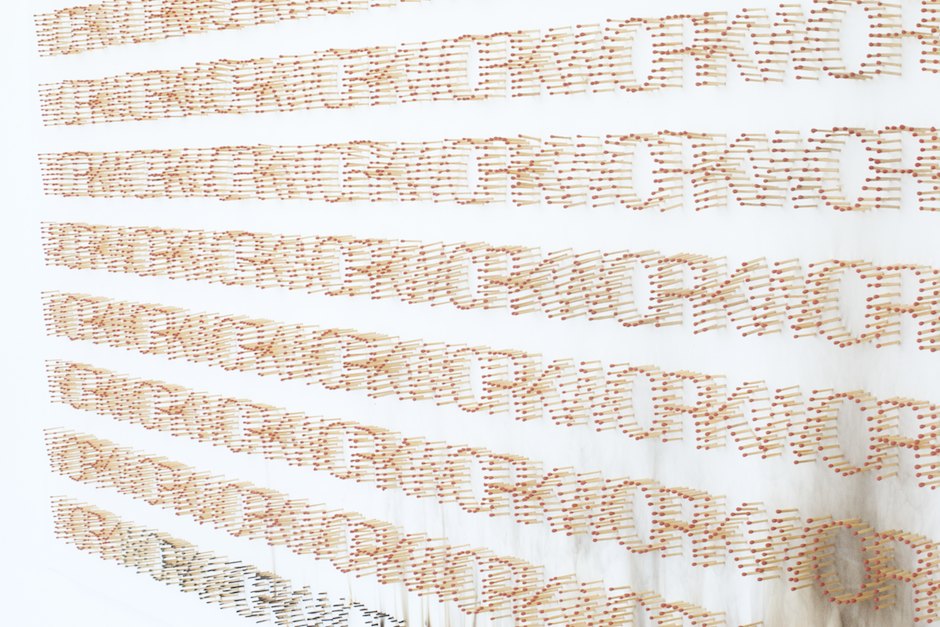
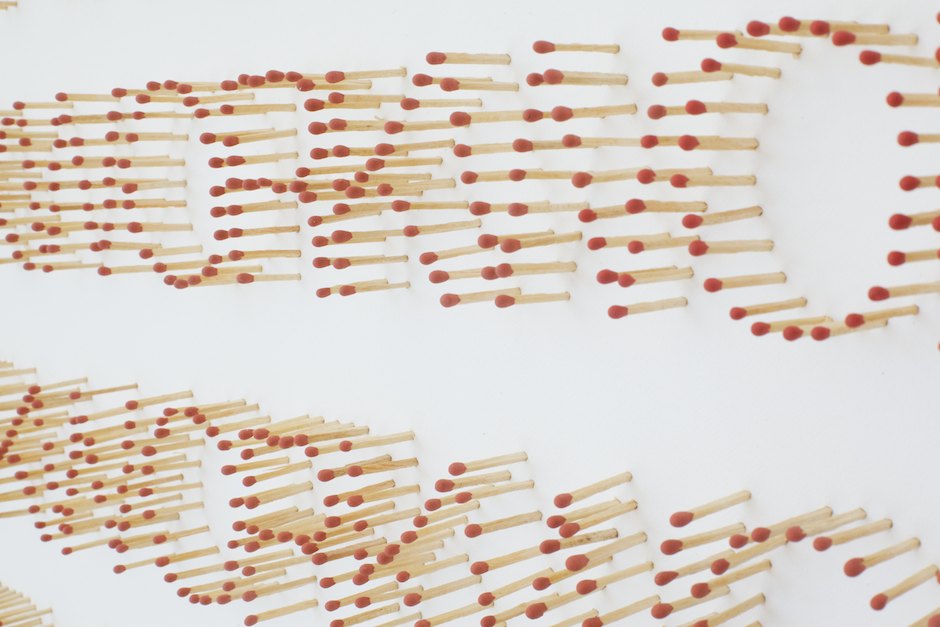
“Trust” nails, wood, 2012
Comprised of more than 15,000 nails, “Trust” shows where it’s safe to sit.
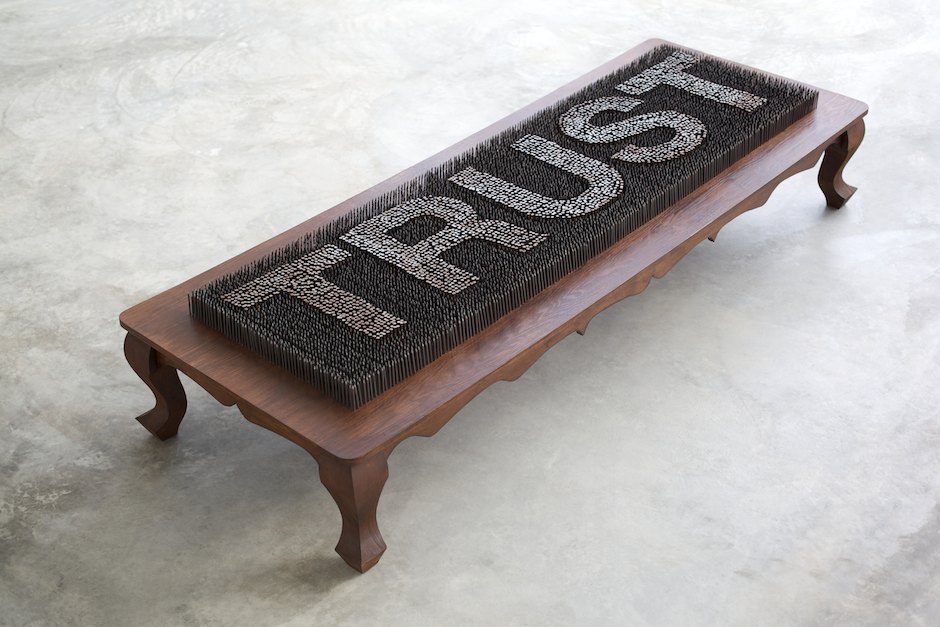
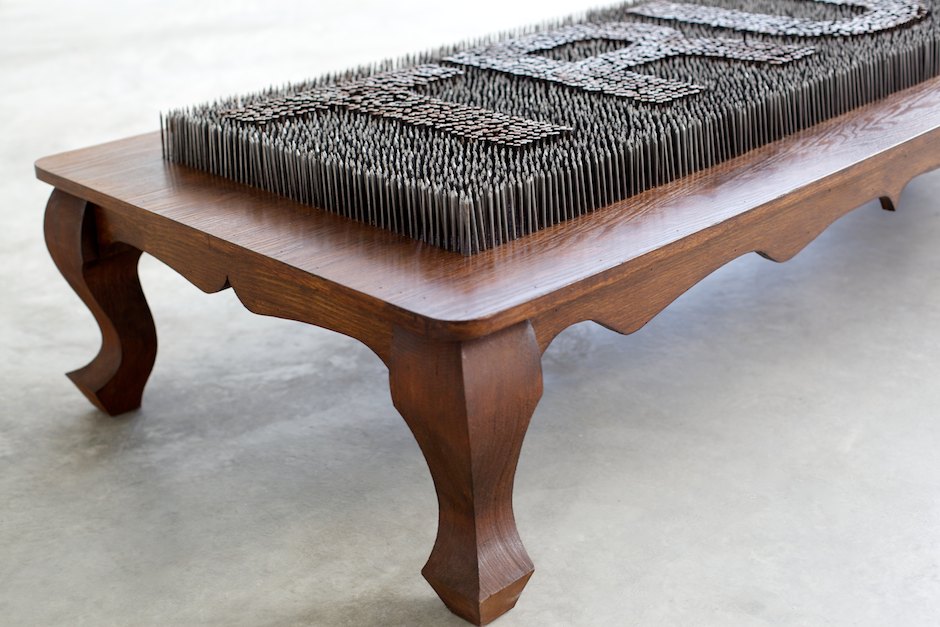
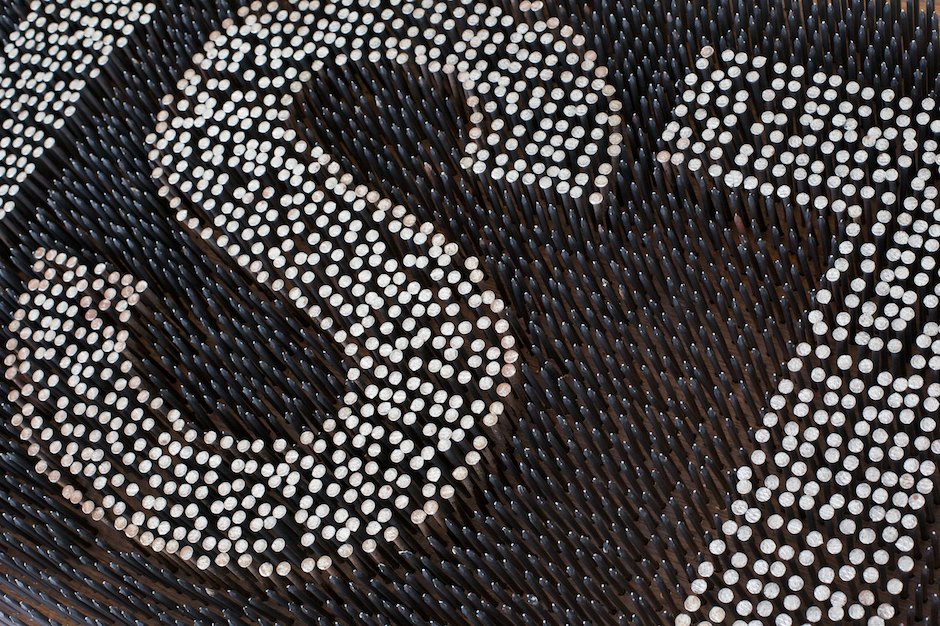
“Giving up is not an option” zinc letters with black lacquer paint, 2012
Giving up is always an option, apparently. The last three letters didn’t make it to the wall, still lying, barely painted on the ground.
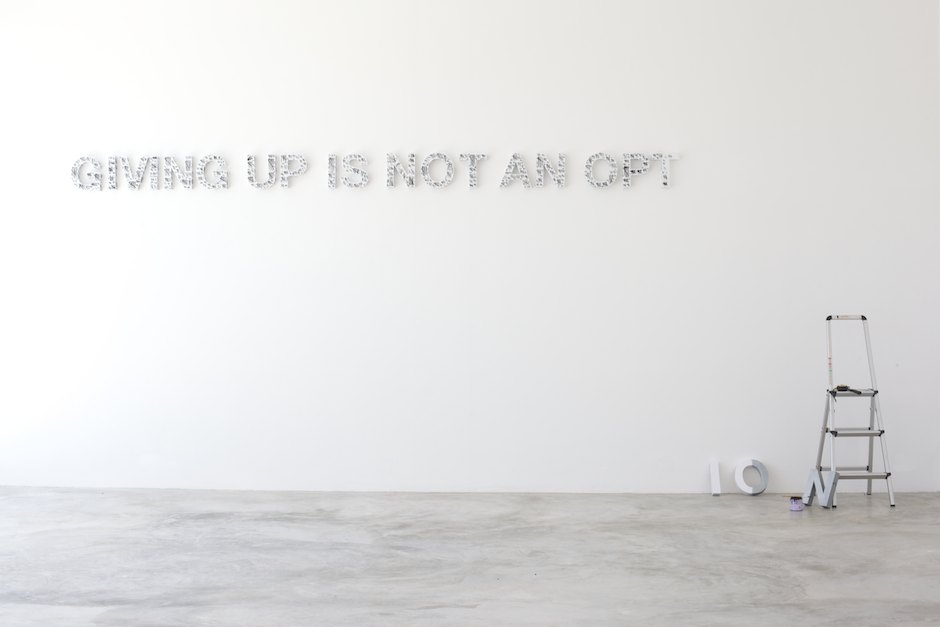
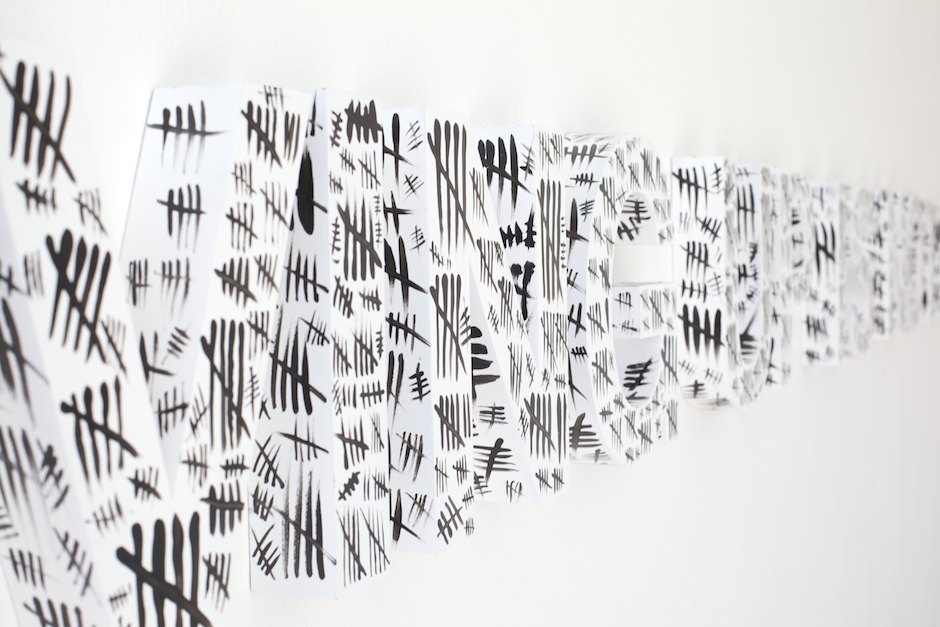
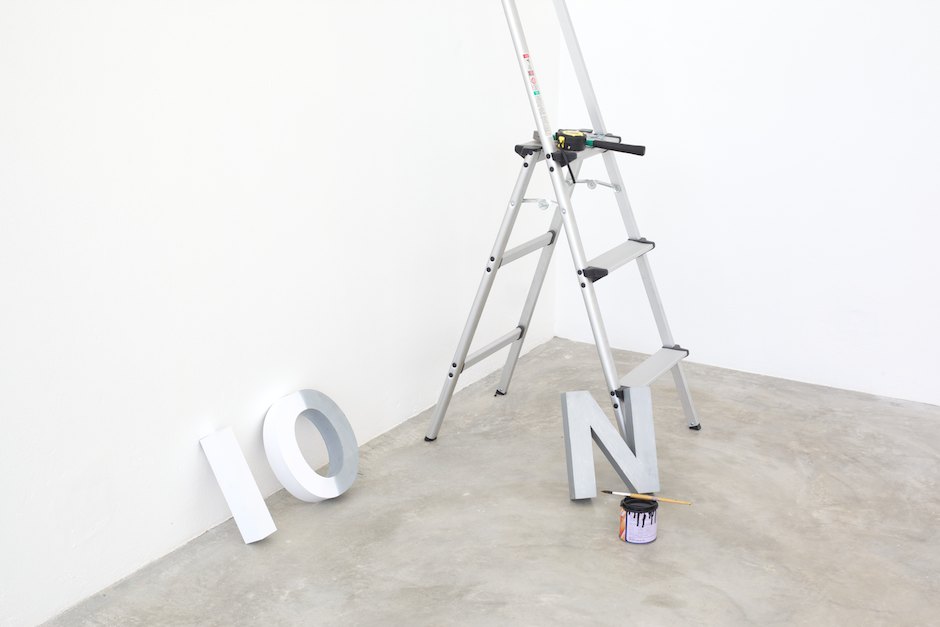
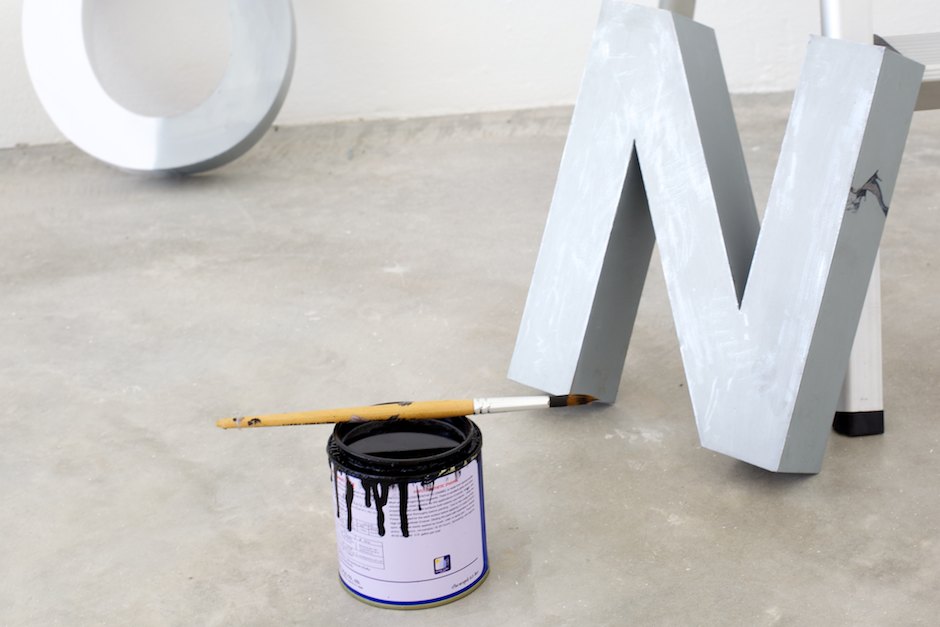
See more of Ole Ukena’s conceptual typographic sculpture on his website.
Find him on Tumblr, Twitter and Facebook.
May 14, 2013 | sculpture
Ron Mueck’s new solo exhibition at Paris’ Fondation Cartier includes this incredible work where a man and a woman have been isolated from the rest of the world and are still happy about it after decades. Simply titled, “Couple Under An Umbrella,” it’s one of three new pieces in a show made up of bizarrely scaled sculptures that present people so real you wonder why they’re not breathing – hyperrealism in a contemplative way. My first impression is to relate the sculpture’s size to the person’s character or circumstance, and here the couple’s love is bigger than they are so their bodies follow suit.
Fondation Cartier writes,
“They seem to be frozen moments of life, each capturing the relationship between two human beings. The nature of their connection to each other is revealed by their actions, small, ordinary, yet intriguing. The precision of their gestures, the true to life rendering of their flesh, the suggestion of suppleness in their skin makes them seem completely real.
These works describe situations which are imaginary but their obsession with truth indicates an artist in search of perfection and with an acute sensitivity to form and material. By pushing likeness to its limits Ron Mueck creates works that are secret, meditative and mysterious.”
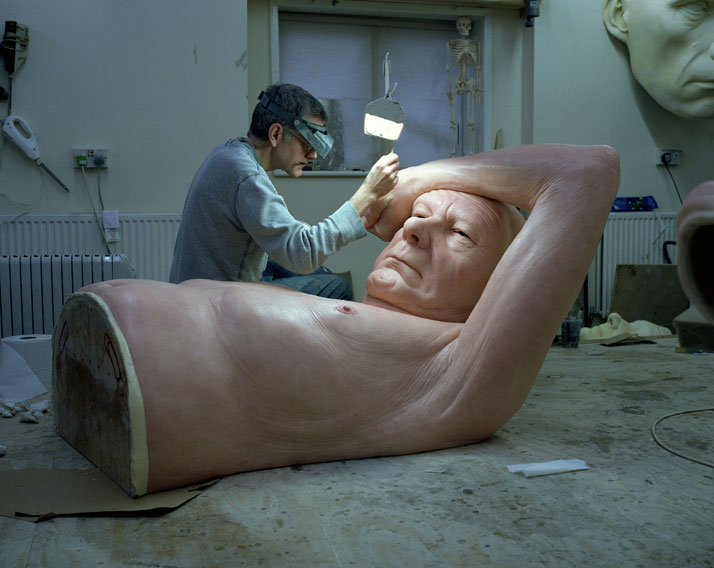
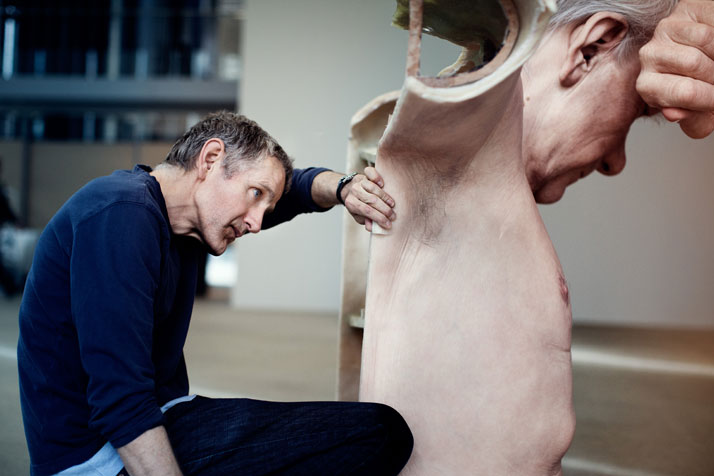

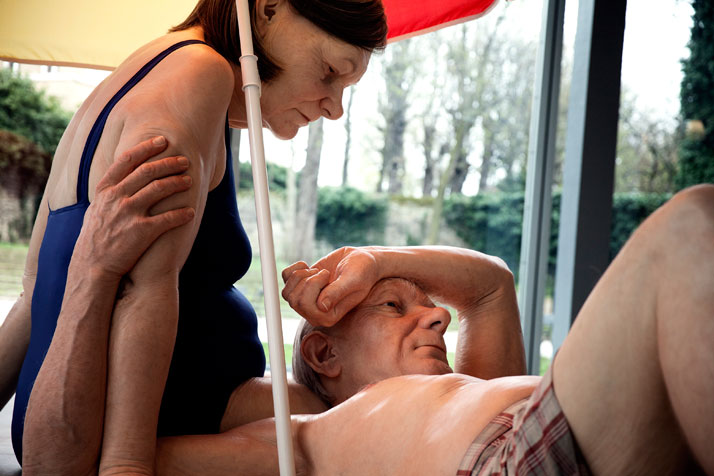
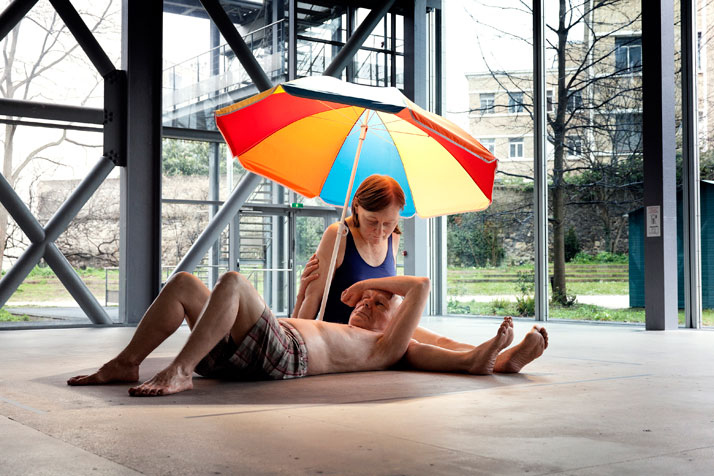
Ron Mueck’s solo exhibition at the Fondation Cartier in Paris in on view until September 29, 2013.
For more information, see their website.
Image source: Yatzer.
Mar 25, 2013 | installation, sculpture
A silver hand stretches from the sky, cut off just below the elbow and grabbing hold of an older black Fiat 500, stopping the car in its tracks. But there’s no driver in the car, so perhaps before it wasn’t moving. After all, the hand’s grip is loose and casual, long thick silver fingers folded over windows – fingers the size of legs, like they belong to a five-footed monster with no face.
It’s not a monster, but a child’s hand, holding the car like a toy, playing with it along our teeny tiny streets. The name comes from what most children say while they play with toy cars: “vroom vroom,” evocative of the way we all sort of speak our lives into existence, validating with words that end up being just as small as we are.
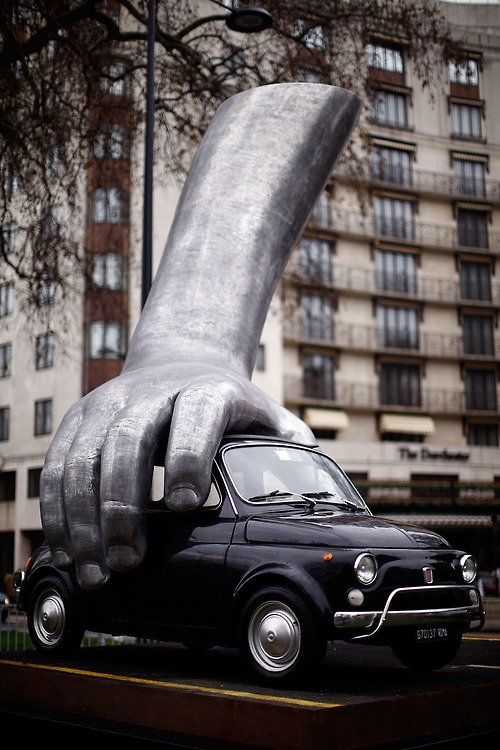
Because how much control do we really have anyway? If our brakes fail and smash us into a building, how much difference would it make knowing that a giant metal baby was in charge of all the chaos? Would you trust the baby more than a bearded prophet with surviving stories?
Lorenzo Quinn uses his sculpture as a visual facility for communication, all with the goal of helping viewers develop values like understanding, tolerance, and harmony. A Roman-born artist who studied at the American Academy of Fine Arts in New York with the intention of becoming a surrealist painter, Quinn discovered his passion for sculpture at 21 and moved to Spain after the birth of his first child. Now at 47 Quinn’s sculptural works have become enormously successful, shown all over Europe since the late 80s.
“I make art for myself and for people who want to join me on a walk through my dreams,” Quinn said, “The way we live our own lives, is paramount. That is why most of my work has to do with values and emotions. ”
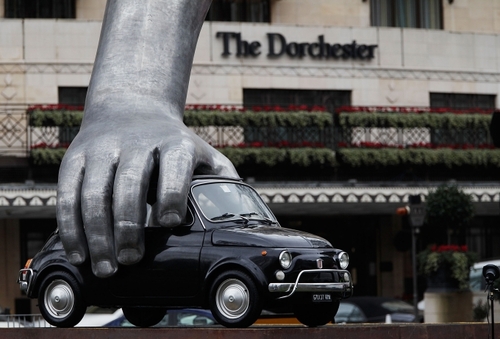
“Vroom Vroom” was initially presented at the Institute of Modern Art in Valencia, Spain in the summer of 2010, and appeared that same year at the Abu Dhabi Art Fair. In January 2011 the sculpture was settled in Park Lane, London as part of the Westminister City Council’s sculpture festival.
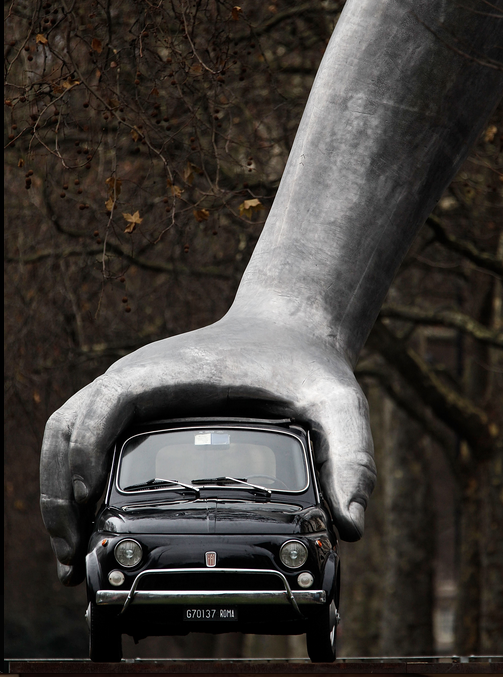
The nearly 15 feet high sculpture creates an open dialogue about our place in the world, the child’s hand indicating the littleness of it all and the title opening all sorts of other discussions about reality, awareness, and language – what does it mean to you?
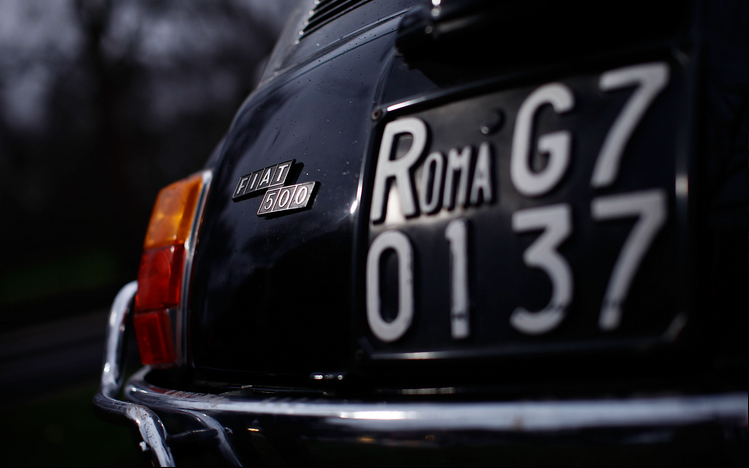
See more of Lorenzo Quinn’s work on his website.
Mar 6, 2013 | sculpture
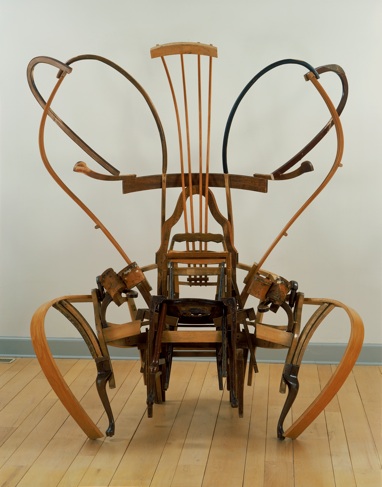
“Throne For The Greatest Rapper Of All Time,” 2005
Found Wood Furniture, 96”h 69”w 48”d
Marc Andre Robinson creates sculptures, drawings and videos from his studio in Brooklyn, all of his work concerned with family and what it takes to belong in one.
His works with chairs show a playful relationship between art and artifact, using found furniture that has probably held the generations of many families within them, giving each piece a stronger sense of realness – art repurposed instead of just created for its own sake.
“Throne For The Greatest Rapper of All Time” looks like either a very elaborate 19th century sex toy, or a complete dining room set come to life, becoming a more powerful Transformer-version of chairs and pieces of table. But the work is very sit-able, and looking closely you’ll see all the stacked chairs come from different sets and different tables. Wooden antennae stretch up symmetrically creating a very impressive silhouette, the backs of the chairs exaggerated and elongated, like a father figure overcompensating.
“By Themselves And Of Themselves” accomplishes a feat against gravity, a huge circle of interlocking chairs standing upright. All the chairs face out, some are plastic but most are wooden, and again each chair comes from a different set – a mismatched bunch somehow made whole.
See more from Marc Andre Robinson on his website.

“Throne For The Greatest Rapper Of All Time” (detail) 2005
Found Wood Furniture 96”h 69”
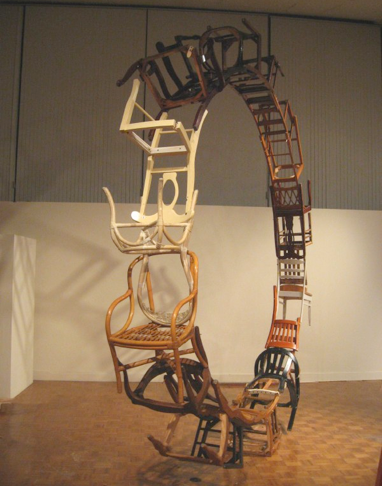
“By Themselves And Of Themselves,” 2008
Found Wood 192”h 192”w






























